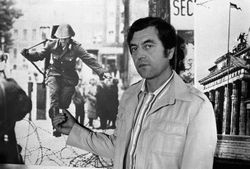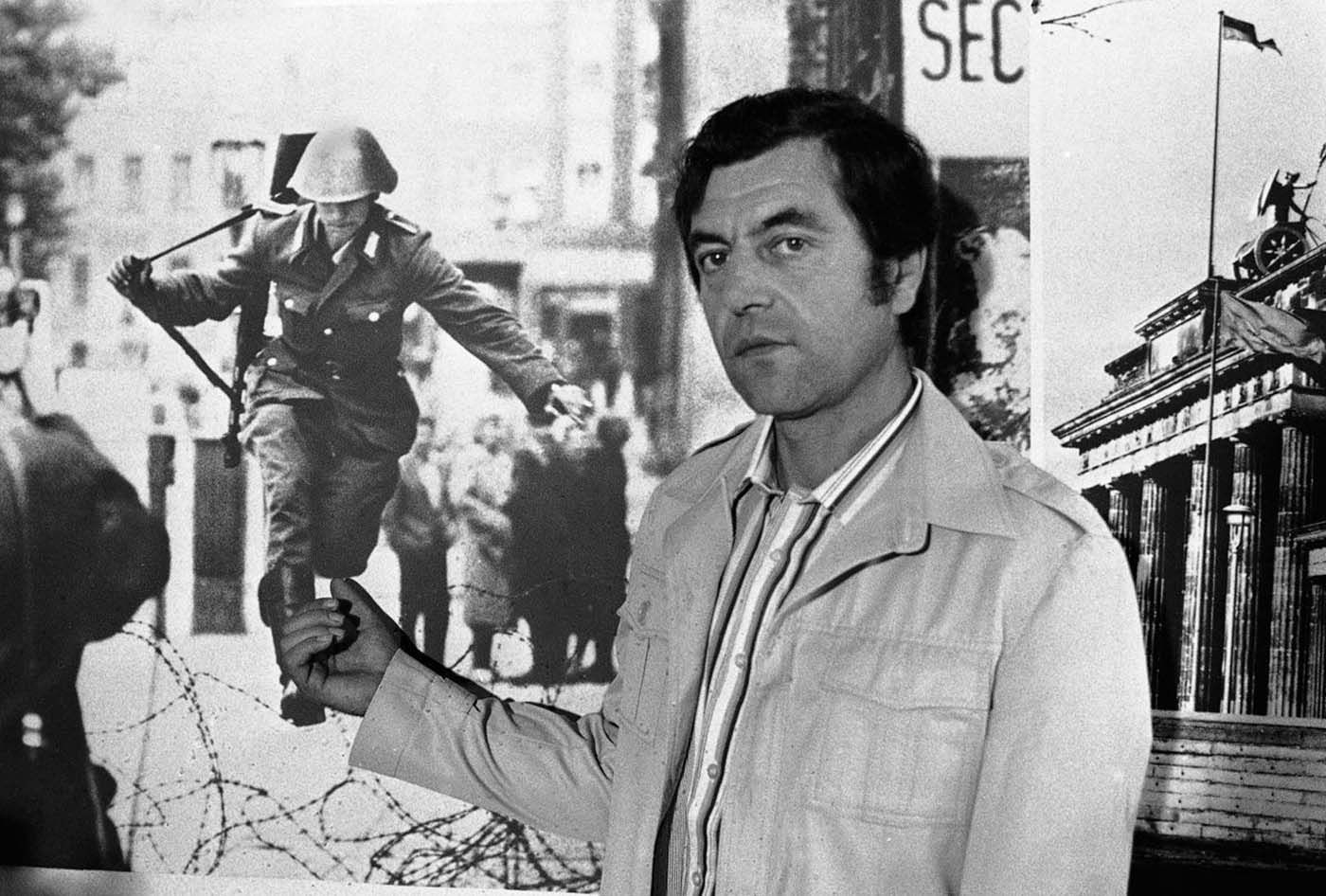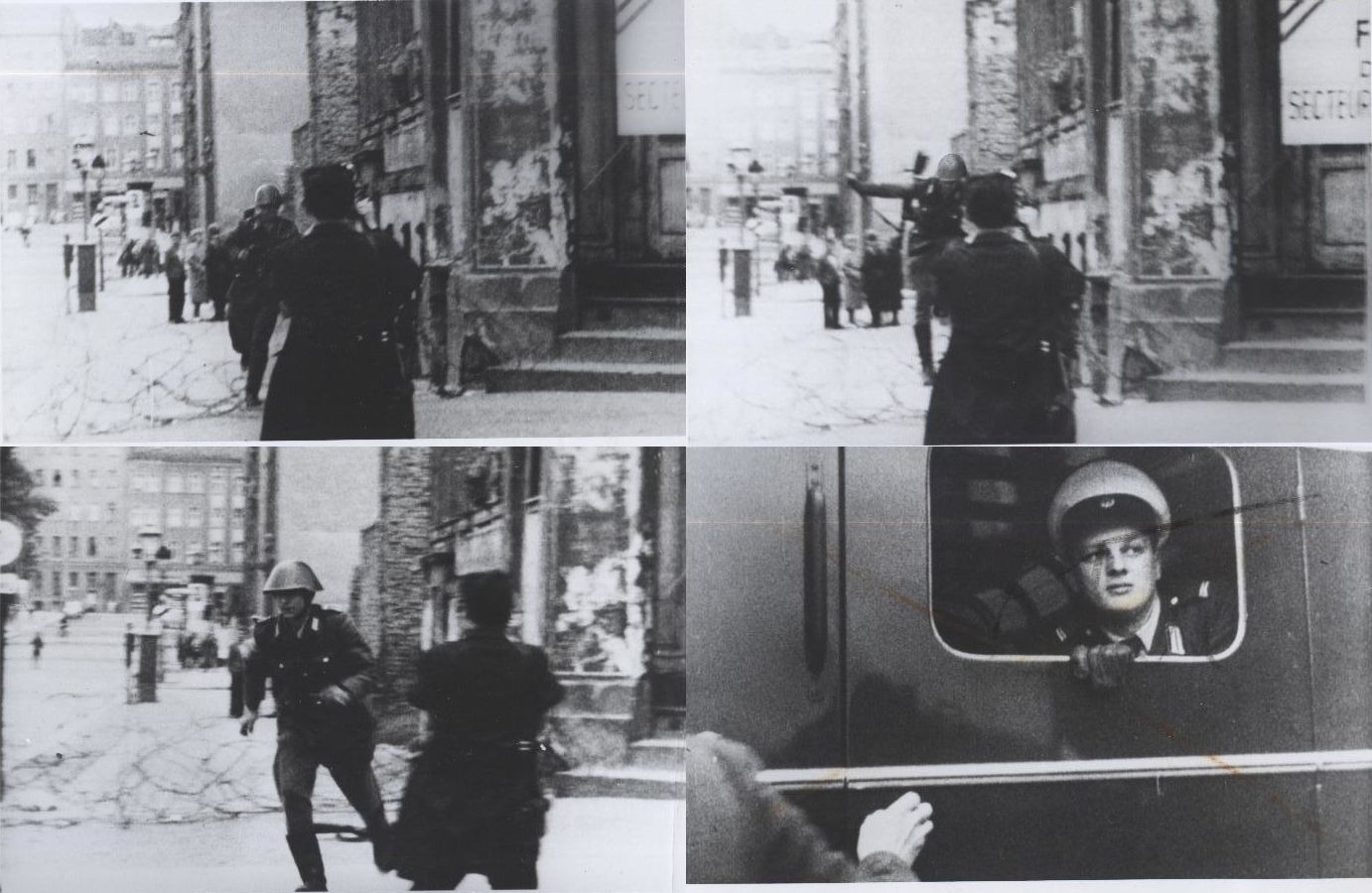Born in Leutewitz, now a part of Riesa, Saxony, Schumann served as a soldier in the East German Bereitschaftspolizei. After three months' training in Dresden, he was posted to a non-commissioned officers' college in Potsdam, after which he volunteered for service in Berlin.
On 15 August 1961 he found himself, aged 19, guarding the Berlin Wall, then in its third day of construction, at the corner of Ruppiner Straße and Bernauer Straße. At that stage of construction, the Berlin Wall was only a low barbed wire fence. As the people on the Western side shouted Komm rüber! ("come over"), Schumann jumped the barbed wire and was driven away at high speeds by a waiting West Berlin police car. Photographer Peter Leibing captured a photograph of his escape on film and it became a well-known image of the Cold War.
Schumann was later permitted to travel from West Berlin to the main territory of West Germany, where he settled in Bavaria. He met his wife Kunigunde in the town of Günzburg.
After the fall of the Berlin Wall he said, "Only since 9 November 1989 [the date of the fall] have I felt truly free". Even so, he continued to feel more at home in Bavaria than in his birthplace, citing old frictions with his former colleagues, and he even hesitated about visiting his parents and brothers and sisters in Saxony. On 20 June 1998, suffering from depression, he committed suicide, hanging himself in his orchard near the town of Kipfenberg in Oberbayern.
A sculpture called Mauerspringer (Walljumper) by Florian and Michael Brauer and Edward Anders, can be seen close to the site of the defection (Bernauer Straße).
Born in Leutewitz, now a part of Riesa, Saxony, Schumann served as a soldier in the East German Bereitschaftspolizei. After three months' training in Dresden, he was posted to a non-commissioned officers' college in Potsdam, after which he volunteered for service in Berlin.
On 15 August 1961 he found himself, aged 19, guarding the Berlin Wall, then in its third day of construction, at the corner of Ruppiner Straße and Bernauer Straße. At that stage of construction, the Berlin Wall was only a low barbed wire fence. As the people on the Western side shouted Komm rüber! ("come over"), Schumann jumped the barbed wire and was driven away at high speeds by a waiting West Berlin police car. Photographer Peter Leibing captured a photograph of his escape on film and it became a well-known image of the Cold War.
Schumann was later permitted to travel from West Berlin to the main territory of West Germany, where he settled in Bavaria. He met his wife Kunigunde in the town of Günzburg.
After the fall of the Berlin Wall he said, "Only since 9 November 1989 [the date of the fall] have I felt truly free". Even so, he continued to feel more at home in Bavaria than in his birthplace, citing old frictions with his former colleagues, and he even hesitated about visiting his parents and brothers and sisters in Saxony. On 20 June 1998, suffering from depression, he committed suicide, hanging himself in his orchard near the town of Kipfenberg in Oberbayern.
A sculpture called Mauerspringer (Walljumper) by Florian and Michael Brauer and Edward Anders, can be seen close to the site of the defection (Bernauer Straße).




